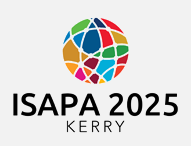Start Date
16-6-2025 10:00 AM
End Date
16-6-2025 11:30 AM
Abstract
Introduction: Campus recreation programming is a primary resource for physical activity among students [1], yet an estimated 68% of college students with disabilities (SWD) use these facilities less than five times per year [2]. An assessment of the campus recreation accessibility is needed to identify modifiable barriers [3]. This study evaluated the structural and programmatic accessibility of campus recreation facilities as defined by (1) an objective, standardized instrument, and (2) the perceptions of staff - aligning with Sustainable Development Goal 11, article 9 and 30.5 of the UNCRPD.
Methodology: This mixed-methods collective case study recruited a purposive sample of three campus recreation programs from 4-year public universities in the Southeast U.S, represented by 7 staff members (directors and program coordinators). Accessibility was evaluated using the Accessibility Instruments Measuring Fitness and Recreation Environments (AIMFREE) through survey and on-site visits. Semi-structured interviews supported data triangulation and in-depth investigation of accessibility practices.
Results: AIMFREE survey and on-site evaluations revealed subpar accessibility in policies, access routes, and professional training (7-35%), contrasting with higher scores for infrastructural elements like bathrooms and locker rooms (60-100%). Interviews highlighted physical accessibility while underscoring gaps in staff training, funding allocation, and inclusive programming. Participants expressed commitment to improving accessibility but cited institutional and organizational barriers.
Conclusion: Findings underscore the need for tailored staff training, enhanced funding for adaptive programs, and a systemic approach to policy shifts in campus recreation. Addressing these barriers supports the theme by fostering inclusive, accessible spaces that empower SWD to participate in sport and leisure.
References
-
Forrester, S. (2014). The benefits of campus recreation. Corvallis, OR: NIRSA.
-
Yoh, T., Mohr, M., & Gordon, B. (2008). Assessing satisfaction with campus recreation facilities among college students with physical disabilities. Recreational Sports Journal, 32(2), 106-113.
-
Riley, B. B., Rimmer, J. H., Wang, E., & Schiller, W. J. (2008). A conceptual framework for improving the accessibility of fitness and recreation facilities for people with disabilities. Journal of Physical Activity and Health, 5(1), 158-168.
/="/">
Recommended Citation
Abrahamson, Kayla and Ross-Cypcar, Samantha, "Inclusivizing Campus Recreation: Addressing Accessibility Barriers for College Students with Disabilities" (2025). International Symposium of Adapted Physical Activity and International Symposium on Physical Activity and Visual Impairment and Deafblindness. 10.
https://sword.mtu.ie/isapa/2025/day1/10
Inclusivizing Campus Recreation: Addressing Accessibility Barriers for College Students with Disabilities
Introduction: Campus recreation programming is a primary resource for physical activity among students [1], yet an estimated 68% of college students with disabilities (SWD) use these facilities less than five times per year [2]. An assessment of the campus recreation accessibility is needed to identify modifiable barriers [3]. This study evaluated the structural and programmatic accessibility of campus recreation facilities as defined by (1) an objective, standardized instrument, and (2) the perceptions of staff - aligning with Sustainable Development Goal 11, article 9 and 30.5 of the UNCRPD.
Methodology: This mixed-methods collective case study recruited a purposive sample of three campus recreation programs from 4-year public universities in the Southeast U.S, represented by 7 staff members (directors and program coordinators). Accessibility was evaluated using the Accessibility Instruments Measuring Fitness and Recreation Environments (AIMFREE) through survey and on-site visits. Semi-structured interviews supported data triangulation and in-depth investigation of accessibility practices.
Results: AIMFREE survey and on-site evaluations revealed subpar accessibility in policies, access routes, and professional training (7-35%), contrasting with higher scores for infrastructural elements like bathrooms and locker rooms (60-100%). Interviews highlighted physical accessibility while underscoring gaps in staff training, funding allocation, and inclusive programming. Participants expressed commitment to improving accessibility but cited institutional and organizational barriers.
Conclusion: Findings underscore the need for tailored staff training, enhanced funding for adaptive programs, and a systemic approach to policy shifts in campus recreation. Addressing these barriers supports the theme by fostering inclusive, accessible spaces that empower SWD to participate in sport and leisure.
References
-
Forrester, S. (2014). The benefits of campus recreation. Corvallis, OR: NIRSA.
-
Yoh, T., Mohr, M., & Gordon, B. (2008). Assessing satisfaction with campus recreation facilities among college students with physical disabilities. Recreational Sports Journal, 32(2), 106-113.
-
Riley, B. B., Rimmer, J. H., Wang, E., & Schiller, W. J. (2008). A conceptual framework for improving the accessibility of fitness and recreation facilities for people with disabilities. Journal of Physical Activity and Health, 5(1), 158-168.
/="/">

